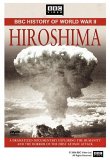| Reviews & Columns |
|
Reviews DVD TV on DVD Blu-ray 4K UHD International DVDs In Theaters Reviews by Studio Video Games Features Collector Series DVDs Easter Egg Database Interviews DVD Talk Radio Feature Articles Columns Anime Talk DVD Savant Horror DVDs The M.O.D. Squad Art House HD Talk Silent DVD
|
DVD Talk Forum |
|
|
| Resources |
|
DVD Price Search Customer Service #'s RCE Info Links |
|
Columns
|
|
|
BBC History of World War II: Hiroshima
But while the production values, on par with pricey TV movies, and CGI effects are somewhat impressive, their effect is quite the opposite of what was intended. The inter-cutting of the actual footage with the dramatic recreations only underscores that they're exactly that: recreations. What we're seeing is not real.
When the dramatized scenes turn to the immediate aftermath of the atomic bomb exploded over Hiroshima, this dichotomy becomes even more pronounced. There are actors made up with horrible burns, with pieces of glass sticking out from all over the face and body, but the viewer nonetheless still has that cushion of unreality, the knowledge that what we're seeing are actors wearing makeup. At the same time the annoyingly contemporary cutting - the seconds before the bomb explodes is edited together as if it were The Matrix - only serves to make the real footage lose some of its power in the process.
Part of the problem is that no dramatic recreation, no matter how skillfully done, can truly capture and perhaps even comprehend the Hell-on-earth experienced by tens of thousands of fellow human beings on that horrible day. For all its Hollywood-influenced razzle-dazzle, Hiroshima's impact is frankly nothing compared to, for example, visiting the Hiroshima Peace Memorial Museum where simple objects recovered after the blast - a children's blackened, misshapen tricycle, for instance - have a profound effect on visitors from all over the world.
The recreations present other problems. A sequence set at the Potsdam Conference, inter-cut with the footage from the real meeting, is seriously marred by the actors playing Stalin, Truman, and Churchill who don't much resemble their counterparts in the archival footage. (Watching something like this and recognizing actors - "Hey look! There's Shane Rimmer!" - doesn't exactly infuse it with a sense of reality, either.)
More importantly, watching these "dramatized documents" one has to wonder about the source for every bit of dialogue, every gesture. It's one thing to recreate uniforms and props, but how historically accurate are the conversations between historical characters? Are they lifted directly from transcripts or are they suppositions? In one scene, for example, a character discussing what city will be bombed says "Kyoto is out. Stimson likes the temples too much." This implies Kyoto was ruled out as a target out of respect for that city's culture and history, when in fact Kyoto was on the very short list of possible targets until shortly before the bomb was dropped.
The show also adopts without much question the standard Allied position that the Atomic bombs were dropped on Hiroshima and Nagasaki to save "as many as a million lives" were an Allied land invasion necessary, and that Hiroshima was "an important military base." Like the implied links between Iraq and 9/11, these beliefs continue to be widely held despite much scholarship that, at the very least, call these assertions into question.
Only in the final few minutes does it really address and in some particulars ignores altogether the enormous moral quandary dropping the Bomb creates, the argument that state terrorism utilizing weapons of mass destruction on noncombatants for the "greater good" is justifiable.
Video & Audio
Hiroshima is presented in a good, not great 16:9 transfer that's a little soft but otherwise up to contemporary standards, as is the stereo soundtrack. Included are optional English subtitles for the deaf and hearing impaired.
Extra Features
Extras include a four-minute Interview with the Producer, nine minutes of murky Interview Footage with the Enola Gay crew dated August 14, 1945, and Tale of Two Cities, an Army-Navy film produced in 1946 that has fascinating, well-preserved film of Hiroshima but frequently outrageous narration high on Cold War propaganda.
Parting Thoughts
Though sincere, Hiroshima fundamentally errs in assuming that 21st century technical wizardry and meticulous recreations would carry more weight than real footage and detailed accounts from actual witnesses. And though it does an adequate job in explaining what happened, it barely scratches the surface as to how and why. In that sense another British series, the 30-year-old The World at War, is infinitely superior. Rent It.
Stuart Galbraith IV is a Kyoto-based film historian whose work includes The Emperor and the Wolf - The Lives and Films of Akira Kurosawa and Toshiro Mifune and Taschen's forthcoming Cinema Nippon. Visit Stuart's Cine Blogarama here.
|
| Popular Reviews |
| Sponsored Links |
|
|
| Sponsored Links |
|
|
| Release List | Reviews | Shop | Newsletter | Forum | DVD Giveaways | Blu-Ray | Advertise |
|
Copyright 2024 DVDTalk.com All Rights Reserved. Legal Info, Privacy Policy, Terms of Use,
Manage Preferences,
Your Privacy Choices | |||||||














